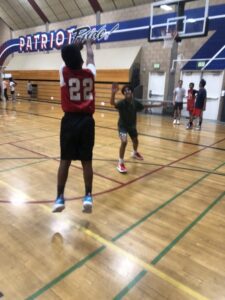Teaching youth players the right way to play in the Tri-Valley
Teaching Tri-Valley basketball players the fundamental skills of the sport is what we do best at the Bulldogs. Most clubs or coaches don’t know what the actual prerequisite skills to make a high school team are. Most parents and coaches would be surprised to hear that the prerequisites are not dribbling and shooting, although those skills are very important to becoming a great player.
Many Tri-Valley basketball players come to us with the goal of making their high school team, making a middle school team or being selected to one of our top Alpha Elite teams. Over the last two decades I’m proud to say we’ve helped over 1,500 kids play high school basketball and over 150 play in college from the Tri-Valley.
How do we go about this? What are the fundamental skills kids NEED to know to make a High School team? What are the prerequisite skills if they’re not dribbling and shooting?
If you live in the Tri-Valley, the absolute must is understanding how to play man to man defense and the skill of playing hard. It’s not to say dribbling and shooting are not critical to becoming a great player, its just that they’re not the base of the pyramid in high school coaches eyes. I’ve seen countless players make teams that were not great shooters or dribblers. However, they knew how to function in a man to man defense, they played extremely hard and competed with maximum effort each position and they would box out and rebound on every shot the opposition took.
How do you teach man to man defense you might ask? Why isn’t everyone teaching this mandatory requirement you might think? I’ve come to the conclusion there are only two reasons:
- They simply don’t know how. They could view man to man as a defense were players simply chase the person they’re guarding around and find their players are easily beat off the dribble. This is why teaching the right way to play is so critical. In man to man defense there are four separate defensive stances. There are three viable coverages to guard a screen off the ball and four viable coverages to guard a screen on the ball. All five players are responsible to see the ball and their man for the entire position and are responsible for guarding both. This can seem complicated if you haven’t gone through the process of developing players, but with experience, we have a systematic approach to teaching young players in the Tri-Valley.
- They would rather try to win youth basketball games today at the expense of player development in the future. Running a very simple and boring two three zone can be effective at the younger levels due to the fact they’re not physically strong enough and don’t have enough repetitions to be great shooters yet. This trade off is being born out at the highest levels of the sport. Many of the best players in the world under 25 are from overseas where you cannot play zone until the 6th grade. I think this is a fantastic rule that I wish we would adopt here in America because there is a trade off to playing zone with bigger more skilled players that is not suffered in very young kids. Namely, they’re not strong enough to fire a skip pass on a line 25 feet to a player in a vacated zone and they’re not great outside shooters yet for the reasons mentioned above. I also reject this premise on three counts. First, we’ve had amazing success playing man to man at the very young age groups. Man to man, after all is by far the best defense if taught and executed properly. You can check out our Instagram post here detailing our 2nd graders dominate performance over the weekend at a tournament. Second, you cannot play a good zone without understanding man to man principles. Otherwise, you’re simply telling a player to go stand in a spot, shut off their brain and a goalie in some shape or fashion. The third and most important is why wouldn’t you teach young players the right way to do something first? Why teach bad habits that will only become a problem in the future? This is clearly flawed logic.

It’s so often I hear people talk about the “fundamentals” or “footwork.” These are nebulous terms that are not specific on purpose because most coaches don’t know what they actually are or how to teach them. I see coaches with gimmicks with a million cones on the floor and practices many flashy dribbling moves. Ball handling is a mandatory skill, so is shooting and I will have more to say about how to improve those skills in a later post, however, they’re not the minimum requirement to make a high school team.
Teaching young players has always been my first priority in our club. Teaching kids in the Tri-Valley the tools they need to make their teams and achieve their goals is more important to me than winning a youth game in fourth grade. I’d much rather have developed a player with the most important skills needed to play the right way and have the tools needed so when they show up to try outs that first week in November, their name is posted on the list of players that made the team.
If you’re interested in learning the right way to play and you want to make a high school team in the Tri-Valley, you can fill out a registration form here.

